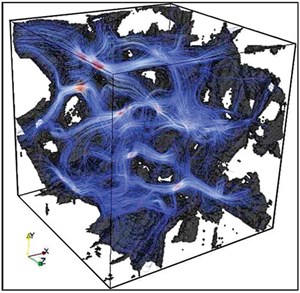What's new in exploration
We now know who the next negotiator will be for the U.S., with respect to global oil policies, and in particular for dialogue(s) with OPEC and others. We also know that, in spite of whatever was promised by whomever, regulations will not go away.

The U.S. Congress made no such promises, and neither did the WTO or the UN or OPEC or Mexico, or Eurotopia, or Venezuela, or Russia, etc. We now get to see what, if any, changes will occur to the world-wide regulations that bind us. Not if or when, but what and how much, or how bad... One thing we can count on, there will be changes at the political top of every U.S. regulatory agency. We will begin to see the “light,” or more darkness, in February 2017.
I have received a lot of feedback on regulations, especially restrictions from BLM, EPA and others, mainly federal. For example, there are BLM land permits allowing only four months per year of operations, as well as EPA well-site air emission standards that defy technical measurement! I underestimated the burden. I have no idea how to estimate the benefit; neither do the regulators or Congress—which they admit to. Why do governments of the world focus on being encumbering, rather than enabling?
The ultimate cost? For example: If exploration expense onshore the U.S. is $5/boe, production would be another $10, and then the effect of regulations would push in another $12, plus about $8 for abandonment. That is about $35/boe, just to say “hi, have a nice day!” Some warnings by engineers for shale oil development predicted, back in 2005, that break-even (BE) price would be at $60. New regs on emissions, water disposal, etc., are pushing BE over $80. So, regulation is becoming about half or more of total production cost. Yet, you can’t shut in, since cash flow is still king.
Of course, the consumer bears the total burden, not the “evil” oil companies. However, the governments are not in parity, collecting tax on the increased regulation. Instead, the resulting tax revenue is significantly lower. What special interest uses the power of government to decrease oil activity at the expense of the tax dollar? And for what reason?
Think you know the definition of a Darcy, how to work a conventional milli-Darcy reservoir, and have some shale oil war stories on micro-Darcy reservoirs? What if, some day after a mega merger, you discovered that you bought what could be the world’s largest, most extensive sand reservoir? It flows more than a dream of a lotto winner, and cash flow is no issue, no matter how many locals have to be “hired.”
Agbami Texaco to Agbami Chevron is the place. I remember arguing with Texaco about imaging the discovery. They did not like the quality of the seismic for the reservoir zone on the 10-km, 2D line they had us process. I offered to shoot a 100-km line to show more of what some of us thought was going on, with the caveat that if it was useful to the answer, Texaco would shoot a new 3D with our boats. That discovery line was being viewed as a small piece on the hide of a large elephant. We needed all of the new 100-km line to show the extent of that phenomenal turbidite reservoir.
Was there a run to the bank? No, what Chevron did back then was to begin a secret study of parts of the reservoir that did not flow like a dream. First was the mega-micro-Darcy rock. Then some professorial type said, there was more than X times in-place gas if we could find a way to extract it. The problem? The gas molecule was larger than the pore void, i.e., nano-Darcy permeability. Results of that work and similar for the Haynesville are now published. The best answers for extraction, not so much.
What possible technologies do explorationists have today, to detect and develop in-place reserves in the nano-Darcy range? I am asking, not telling. Probably not much within anyone’s oil company lab. This brings up referring back to the 1970s/1980s in situ oil-shale [vs. shale-oil] retort efforts perhaps?
Work on nano-Darcy reservoirs is getting worldwide attention. Research by RPSEA has been made public and is worth a look. See the highly expanded image in the figure on this page, showing typical shale with molecular-sized perm.
Given some of the suggestions I read about in the popular media, perhaps if the world turned off all its vehicles for one minute of silence, that would cure the environmental issue, or if we created a hash-tag # something like…Save the Dinosaurs Day… ![]()



